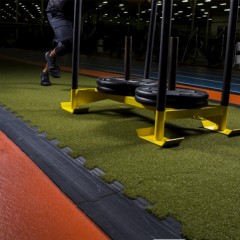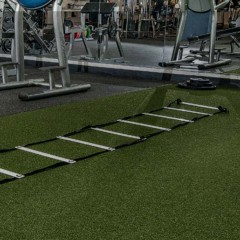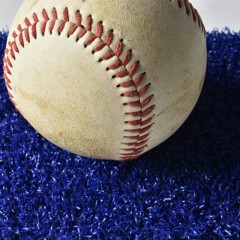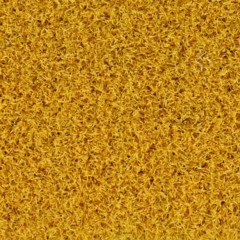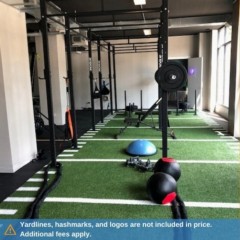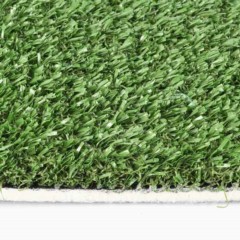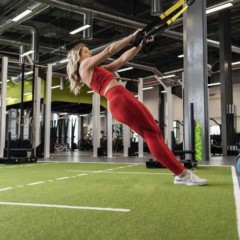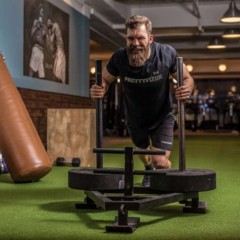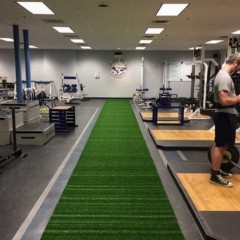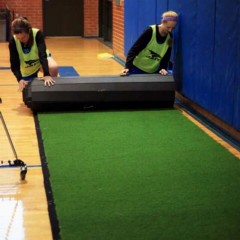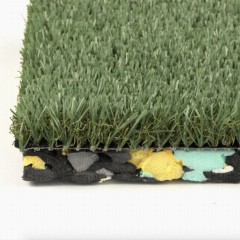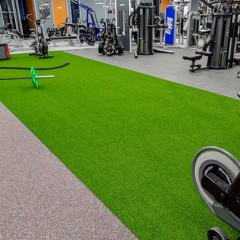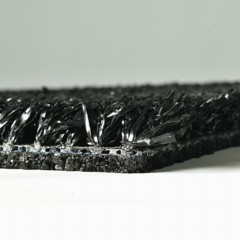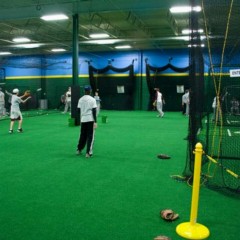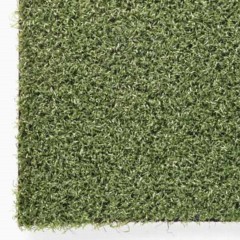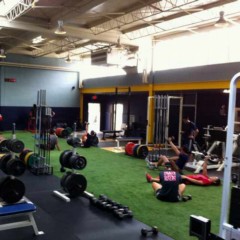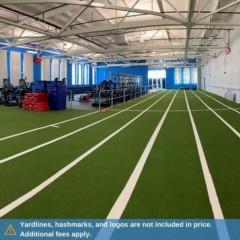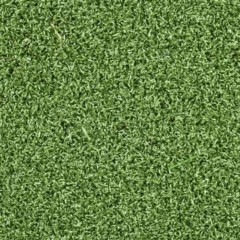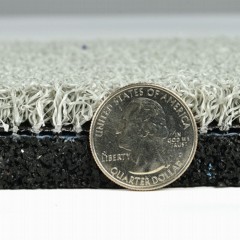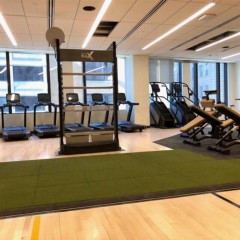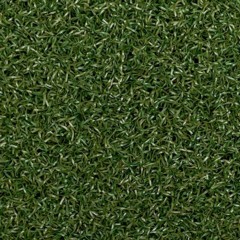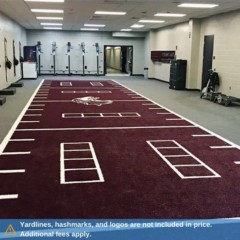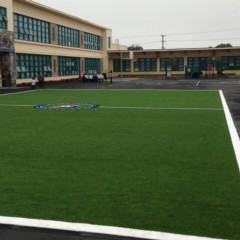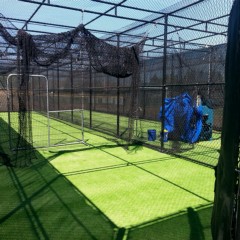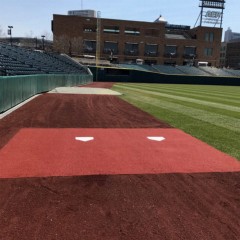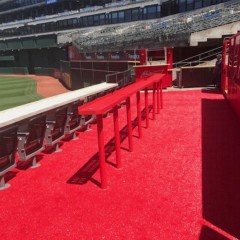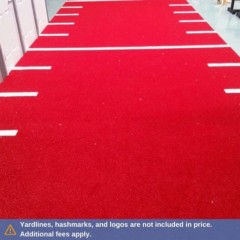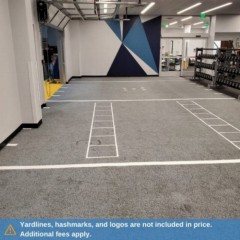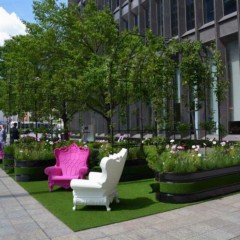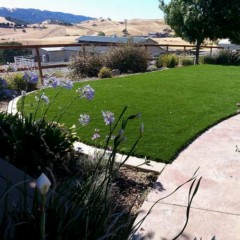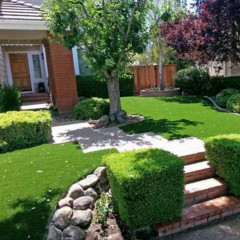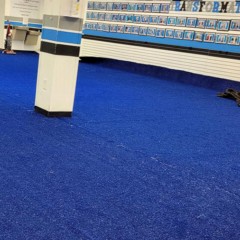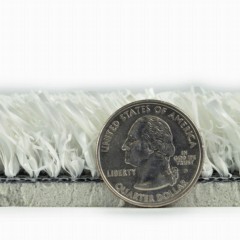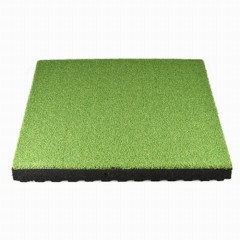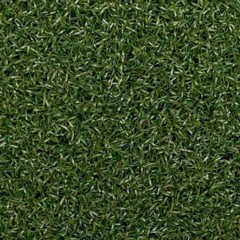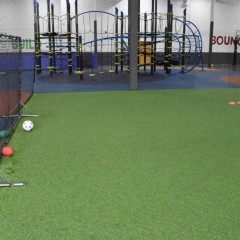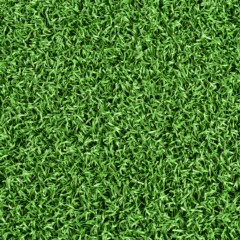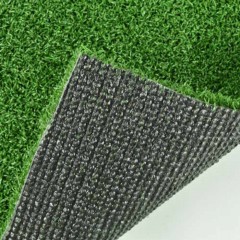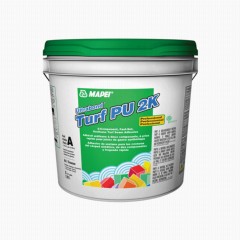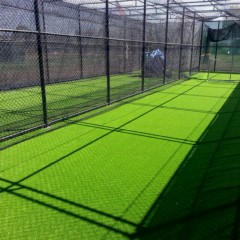Options for Indoor Turf
When you select indoor turf from Greatmats, you receive a versatile floor covering that works for multiple types of installations and use cases. Our indoor artificial turf is comfortable and safe to use for many different kinds of athletics.
With our indoor sports turf, you have numerous options for coverage size, pile height, thickness, and colors. These products are easy to maintain and offer excellent durability.
Types of Indoor Turf
At Greatmats, we offer many different product selections for interior turf that can match your planned use case.
- Tiles: Interlocking turf tiles use a firm base material that allows for a tight connection between tiles. The artificial grass then looks natural without obvious lines between tiles. Sizes of 2x4 or 2x2 feet are available with the tiles.
- Rolls: Rolls of padded indoor turf are available that can cover a large space quickly. These often carry a size of 6x25 or 6x35 feet, so you may need power equipment or multiple people to carry them into place. Larger rolls up to 15 feet in width are available, too.
- Pile height: Different pile heights are perfect for particular use case plans. Golfers making a putting green want a short pile height of about 1/4 of an inch. A dog play area or soccer practice area could use a longer pile height approaching 1-1/2 inches.
- Padding: Indoor padded turfs often have a padding layer on the underside that allows you to install it directly over concrete or another hard surface. The thickness of the padding can range from 5 mm (about 1/5 of an inch) to 2 inches.
- Colors: Although most indoor turf carpet carries a green color to resemble natural green grass, we offer multiple other colors, too, including black, blue, brown, clay, gray, maroon, navy blue, orange, purple, red, silver, tan, white, and yellow.
Benefits of Indoor Field Turf
Our turf carpet indoor products are among our most popular options, thanks to the numerous benefits they offer, including:
- Durable enough for athletic practices
- Padding layer yields cushioning over concrete
- Realistic look that resembles natural grass
- Commonly available in 6- or 15-foot wide rolls that cover a large area fast
- Multiple pile heights available
- Multiple colors available
- Works for multiple sports, including soccer, golf, baseball, softball, football, and more
- Installation options include glue and vinyl tape
- Some rolls with rubber backing don’t need installation with adhesive
- Minimal maintenance requirements
- Cleaning can be done with a vacuum
- Rinse the turf occasionally if you have a floor drain in the area
Where to Use Indoor Turf
Indoor field turf is a great choice for facilities that offer indoor sports practice areas during wintertime or during rainy days. The turf products fit nicely in many different locations, including:
- Fitness center for speed and sled workouts
- Indoor soccer facility
- Indoor golf practice facility
- Indoor baseball or softball hitting facility
- Indoor football practice facility
- Indoor dog agility
- Trade show
Indoor Turf Q&A
Is it hard to install indoor turf?
It can be a little challenging for a novice to
install indoor turf in the roll format. Make sure the subfloor is clean and level. Because the rolls are large and heavy, you need multiple people to help with the install. You may need to connect the seams of each piece of turf by sewing them or with seam tape. You also may need to glue the turf to the subfloor. A professional installer could help, if desired. It can be easier to install interlocking tiles of turf for a novice.
How do you clean indoor turf?
Maintaining and
cleaning indoor artificial turf requires very little time, especially when it’s used for athletic purposes. To remove everyday dust and solid particles, use a vacuum cleaner or a leaf blower. Use a wet rag to wipe up spills or rinse the turf with a garden hose if there’s a floor drain available. You may need to occasionally fluff the blades with a rake.
Can you put turf in basement settings?
Installing artificial turf in a basement is a popular use case. If going over the top of a concrete subfloor, you may want to select indoor turf that has a rubber or foam backing to provide some cushioning. These products have water resistance and waterproof designs, helping them withstand any moisture that seeps in through the basement foundation block.
What’s the best indoor soccer turf?
The
best indoor soccer turf needs to yield a safe space for athletes, providing cushioning and a non-slip surface. Additionally, it needs to have a pile height that allows for a true roll for the soccer ball, making the practice space as realistic and useful as possible for the players. Rolls of turf can cover a large interior space in a short amount of time.
What is the best strength and conditioning gym turf?
The
best strength and conditioning turf must provide a sure footing for athletes doing speed and sled workouts. It also should have some cushioning to protect the lower body joints of the athletes. Rolls of synthetic grass can cover a large space fast, but you also can use interlocking gym turf tiles to simplify the installation process or to cover a smaller space.
 $454 /sqft You Save 14%Ships Out in 7-10 Working Days SustainableShop$536 /sqft You Save 14%Ships Out in 7-10 Working Days SustainableShop
$454 /sqft You Save 14%Ships Out in 7-10 Working Days SustainableShop$536 /sqft You Save 14%Ships Out in 7-10 Working Days SustainableShop1 reviews •6 Colors
$625 /sqft You Save 14%Ships Out in 7-10 Working Days SustainableShop$305 /sqft You Save 15%Ships Out in 7-10 Working Days SustainableShop$365 /sqft You Save 14%Ships Out in 7-10 Working Days SustainableShop$6549 /Linear Ft You Save 19%$4.37/sqftShips Out in 1-3 Working DaysShop$10254 /Tile You Save 19%$25.64/sqftShop$692 /sqft You Save 14%Ships Out in 7-10 Working Days SustainableShop$2575 /Linear Ft You Save 20%$2.15/sqftShips Out in 1-3 Working DaysShop$13388 /Each You Save 14%$0.74/sqftShips Out in 1-3 Working DaysShop$372 Starting At You Save 15%$3.72/sqftShips Out in 7-10 Working Days SustainableShop